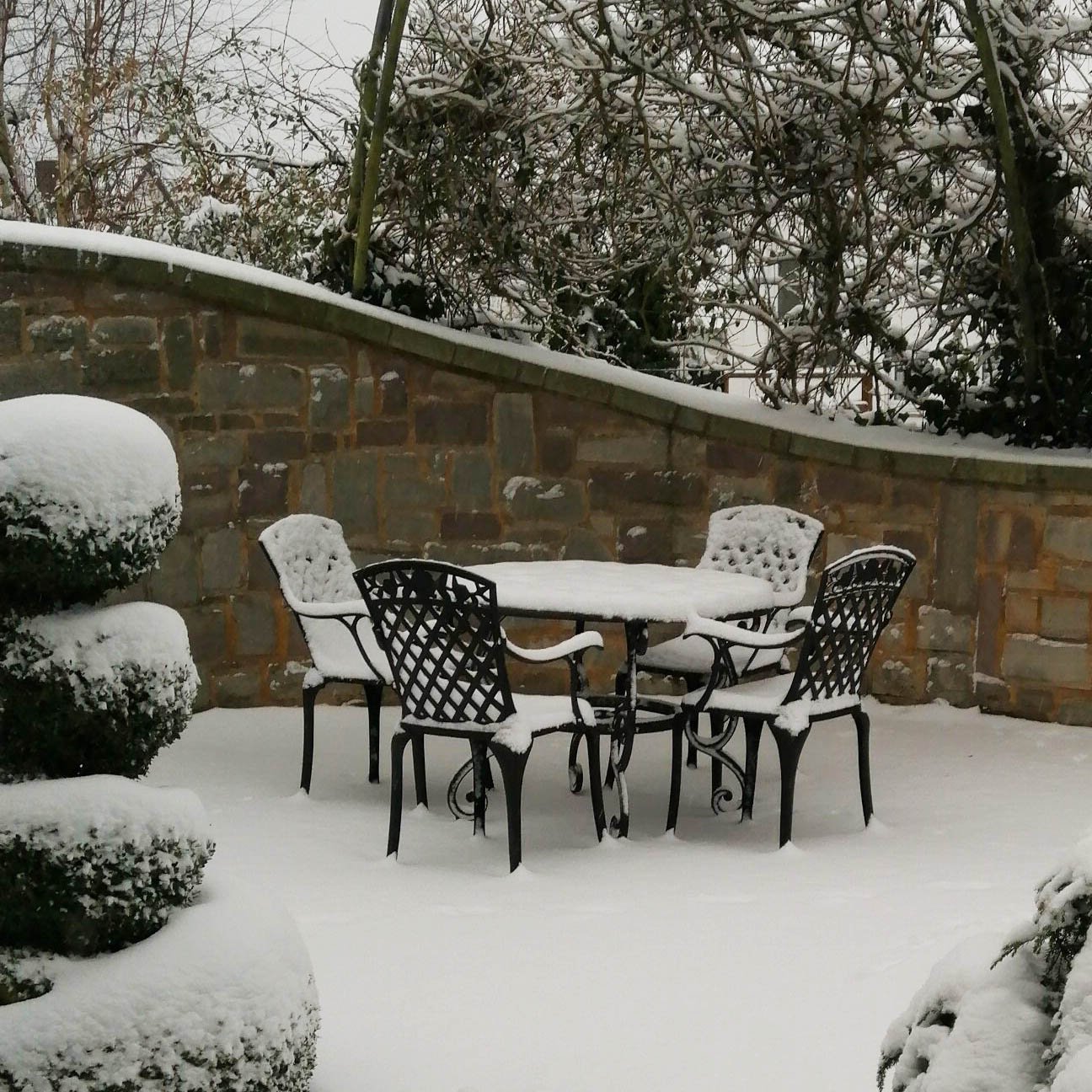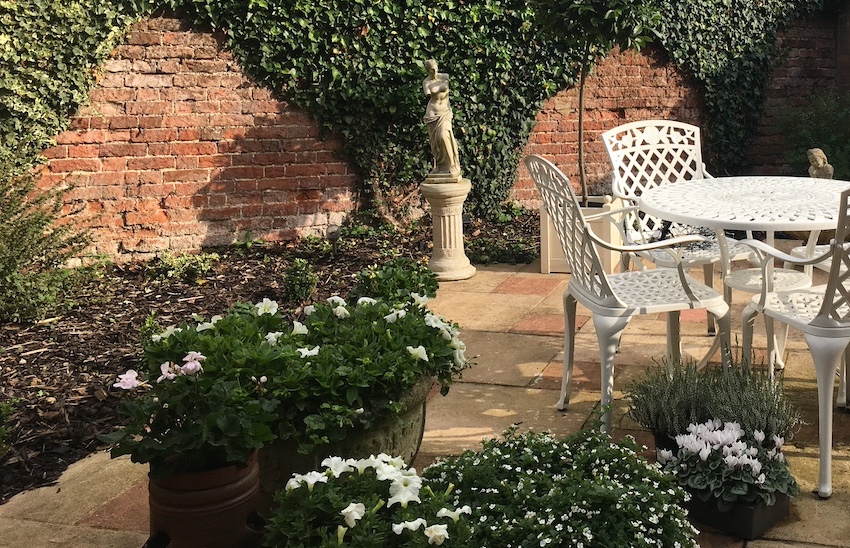Many assume that weather resistance is a given when you purchase outdoor furniture. However, here in the UK, with our inclement weather, we can see all 4 seasons in one day, so some materials are better suited.
Most materials will stand up to the odd passing shower or a day or two in the sun. What some will struggle with is being left on the patio all year round and the constant fluctuating between wet and dry, hot and cold. They can fade, weather, split, crack, etc.
What you need is materials that are fit for purpose and will stay looking like new with minimum maintenance, so today we are looking at what we think are the 7 best garden furniture materials for the UK climate.
Weather-resistance is a critical factor to consider when buying new garden furniture for 5 key reasons; durability, protection, maintenance, functionality and value for money.
Outdoor furniture is exposed to the whole gamut of weather conditions here in the UK from sunshine and rain to wind and temperature fluctuations.
Weather-resistant furniture needs to be designed and constructed from materials that can withstand these elements without deteriorating quickly, ensuring its longevity and saving us money in the long run.
No material is perfect too, they all have pros and cons. However, in our experience, the best materials are the ones that can stand up to all of the above, without the need to apply/reapply any specialist coatings to keep them weather-resistant.
Materials that are less susceptible to damage from moisture, the sun's UV rays, mould, mildew, rust, and corrosion. This “extra” level of built-in protection will help maintain the structural integrity and aesthetic appeal of the furniture over many years.
Furniture that is resistant to weather damage will also require less maintenance compared to non-resistant materials. It won’t be maintenance-free but it means you'll spend significantly less time, money, and effort cleaning, repairing, or even replacing it.
With weather-resistant furniture, you can also leave it outside year-round without worrying about damage caused by seasonal changes. This convenience allows you to enjoy your outdoor space whenever you want, without the hassle of constantly moving or storing, which is perfect if you don’t have any space such as a shed to store it.
Investing in weather-resistant patio furniture will also ensure that you're getting good value for your money. While weather-resistant options may initially be more expensive upfront than non-resistant ones, their durability and longevity make them a worthwhile investment in the long term.
Overall, choosing weather-resistant garden furniture will provide us with peace of mind, ensuring durability, reducing maintenance time, cost and effort, and, well, just generally enhancing our enjoyment of our outdoor living spaces.
For us, 7 types of garden furniture material are best suited to the UK climate and can withstand being left outside all year round. We will look at them now and outline the pros and cons.
1. Cast Aluminium Garden Furniture
Cast aluminium is one of the UK’s most popular choices for outdoor furniture because it is perfectly suited to our climate. It is lightweight, durable, and rust-resistant. It can withstand rain, snow, and sunshine without deteriorating and without much in the way of upkeep.
Pros of Cast Aluminium Garden Furniture
-
Durability
Cast aluminium is highly durable and resistant to rust, corrosion, and weather damage. It can withstand heavy use, the elements, including rain, snow, and UV rays, without deteriorating quickly. -
Lightweight
Despite its durability, cast aluminium furniture is relatively lightweight compared to other materials like wrought iron. This makes it easier to move around your garden or patio as needed. -
Low Maintenance
Cast aluminium requires minimal maintenance to keep it looking good. The occasional wash with warm soapy water is usually sufficient to remove dirt and debris. Unlike wrought iron, it doesn't need to be repainted regularly to prevent rust too. -
Style
Cast aluminium is available in a wide range of styles and designs to suit different tastes and preferences. Whether you prefer a traditional or modern look, you can find furniture that will complement your outdoor space. -
Comfort
Many cast aluminium furniture pieces can be paired with comfortable cushions for added comfort. They provide a comfortable seating option for relaxing outdoors in the sunshine.
Cons of Cast Aluminium Garden Furniture
-
Cost
Cast aluminium furniture tends to be more expensive than other types of outdoor furniture, such as plastic or wood. However, its durability and longevity make it a worthwhile investment in the long run. -
Heat Retention
Cast aluminium furniture can become hot when exposed to direct sunlight. However, it dissipates heat much better than other materials such as wood and iron so it is less prone to cracking and splitting if the temperature drops quickly. We looked at this in detail in our Does an aluminium garden table and chairs get hot in the sun? article. -
Assembly
Most cast aluminium furniture will require assembly upon delivery. While this is typically straightforward, it can be time-consuming, especially for larger pieces or sets. We advise that a 4-seater table set will generally take about 1 hour and 15 minutes to assemble.
Overall, the pros of cast aluminium garden furniture, such as durability, low maintenance, and style, will outweigh the cons for many homeowners looking for stylish and long-lasting outdoor seating options that are perfect for our up-and-down climate.
2. Teak Garden Furniture
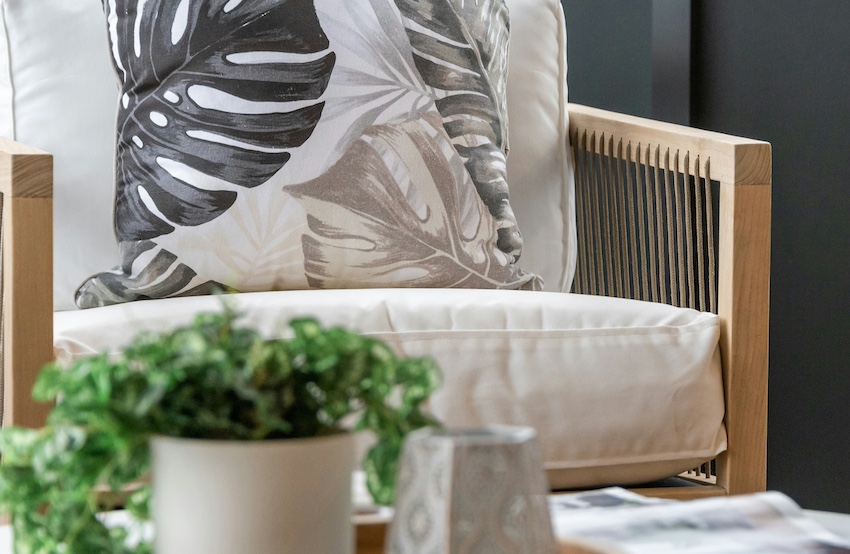
Teak is the Rolls Royce of timbers as it is a naturally weather-resistant hardwood that develops a patina over time. It contains natural oils that repel moisture and insects. While it can be left outside year-round, it is a good idea to clean it occasionally and regularly apply teak oil to maintain its appearance if you don’t want it to weather.
Pros of Teak Garden Furniture
-
Durability
Teak is a dense hardwood that’s naturally resistant to rot, decay, insects, and weather damage. It is highly durable and able to withstand outdoor conditions for many years. -
Natural Beauty
Teak has a rich colour and attractive grain pattern that enhance its aesthetic appeal. Many people appreciate the natural beauty of teak furniture and its ability to complement various styles of garden and patio. -
Longevity
Teak furniture is known for its longevity and can last for decades with proper care, making it a worthwhile investment for homeowners looking for durable and sustainable outdoor furniture options. -
Comfort
Teak furniture is often designed with ergonomic considerations in mind, providing comfortable seating options for relaxing outdoors. Additionally, the natural oils prevent splintering, making it comfortable to sit on.
Cons of Teak Garden Furniture
-
Cost
Teak garden furniture is very expensive but the high cost is due to teak's durability, natural beauty, and scarcity. -
Maintenance
While teak furniture requires minimal maintenance to maintain its structural integrity, preserving its original golden-brown colour requires effort. Leave it and it will naturally weather to a silver-grey patina, which some people find attractive. If you don’t, then regular applications of teak oil or sealant will be needed. -
Natural Oils
Newly purchased teak furniture may have a slightly oily surface or emit a natural odour, which some people find unpleasant. This typically dissipates over time as the furniture weathers and the oils evaporate. -
Heavy Weight
Teak furniture is heavy, which can make it difficult to move around or reposition in your garden or patio. This can be a drawback if you like to rearrange your outdoor furniture frequently or if you plan to store it during the off-season.
Despite these drawbacks, many people consider teak garden furniture to be a worthwhile investment due to its durability, natural beauty, and longevity. You must weigh the pros and cons based on your specific needs and preferences when choosing furniture for your outside space.
3. Polyethylene Rattan Garden Furniture
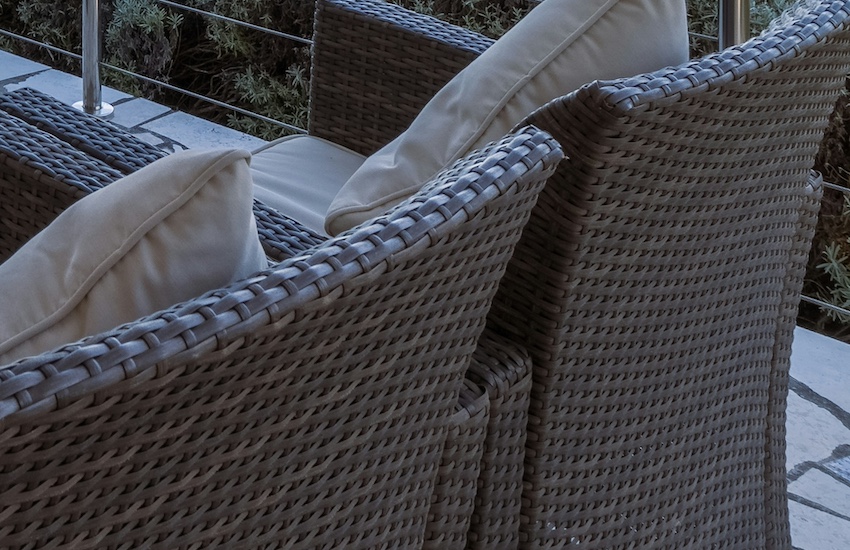
Poly-Rattan or PE-Rattan as it is often shortened too is a synthetic material that looks like natural rattan (such as wicker and bamboo) but is much more durable and better suited to outdoor use. It is water-resistant and can withstand sun exposure.
Pros of Polyethylene Rattan Garden Furniture
-
Weather Resistance
Polyethylene rattan is highly resistant to rain, humidity, and temperature fluctuations. -
Low Maintenance
Unlike natural rattan, which requires regular maintenance and protection from the elements, polyethylene rattan is easier to care for and can be washed with soapy water with no need to seal, stain, or paint to maintain its appearance. -
Lightweight
Polyethylene rattan furniture is lightweight and easy to move around your garden or patio. This makes it convenient for rearranging furniture or storing it during inclement weather or the off-season. -
Comfort
Many polyethylene rattan furniture pieces come with comfortable sofa-style cushions or can be paired with cushions for added comfort. The woven texture of rattan provides a supportive yet flexible seating surface.
Cons of Polyethylene Rattan Garden Furniture
-
Fading
While polyethylene rattan is water-resistant it is often susceptible to fading from UV exposure over time. -
Heat Retention
Like other materials, polyethylene rattan furniture can become hot when exposed to direct sunlight for extended periods and this can weaken the poly-strands. -
Splitting
The poly-weave is often prone to splitting (especially on the arms of chairs and edges of tables) when exposed to bad weather for extended periods. Sharp objects or excessive weight can also cause poly-rattan to break. -
Environmental Impact
While polyethylene rattan is generally considered more eco-friendly than natural rattan, as it doesn't contribute to deforestation, it is still a synthetic material derived from petroleum. Choosing recycled or recyclable polyethylene rattan furniture can help reduce its environmental impact.
Overall, the pros of polyethylene rattan garden furniture, such as its water resistance, low maintenance, and comfort levels, will often outweigh the cons for many homeowners seeking durable and stylish outdoor seating options.
4. Concrete Garden Furniture
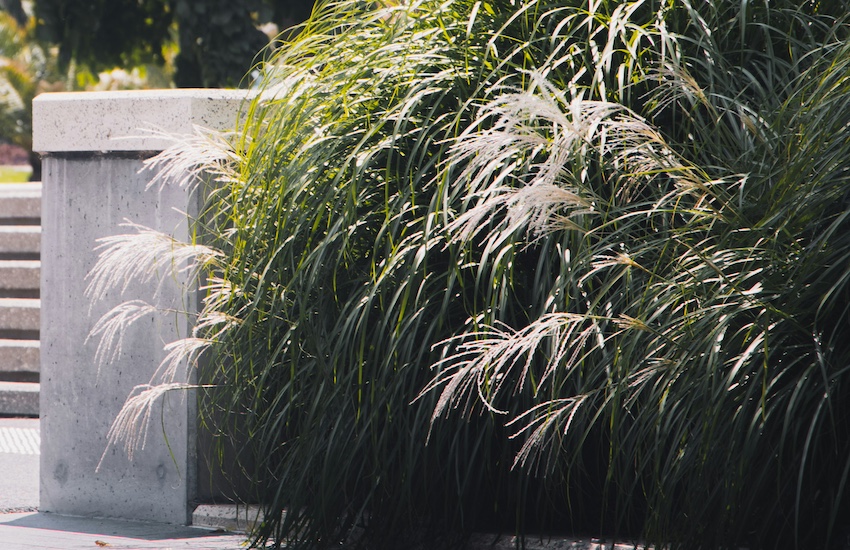
Concrete is a very strong and durable material that can withstand all weather conditions. It's also relatively low-maintenance. However, concrete furniture can be heavy and bulky, and is best in a fixed position, so it's not the best choice for everyone.
Pros of Concrete Garden Furniture
-
Durability
Concrete is exceptionally durable and can withstand various weather conditions, including rain, snow, and sunlight, without deteriorating. It is built to last for many years, making it a long-term investment for your outdoor space. -
Stability
Concrete furniture is heavy and stable, making it resistant to tipping over or being moved by strong winds. This stability ensures that your furniture stays in place, even in a storm. -
Low Maintenance
Concrete garden furniture requires minimal maintenance to keep it looking good. Occasional cleaning with soap and water is usually sufficient to remove dirt and debris.
Cons of Concrete Garden Furniture
-
Weight
As well as a positive the weight can be also viewed as a negative. Concrete furniture is heavy and often can’t be moved. Additionally, the weight of concrete may require extra support or reinforcement for decks or patios. -
Hardness
Concrete surfaces can be hard and unforgiving, making them less comfortable for extended periods of sitting. You can add cushions to improve comfort but we often think of them more as architectural pieces. -
Cracking
While concrete is incredibly durable, it can still crack over time, especially in the UK where we experience regular freeze/thaw cycles. Proper installation and maintenance can help minimise the risk of cracking. -
Mobility
Once installed, concrete furniture is typically permanent and difficult to relocate. This lack of mobility may not be suitable for renters or homeowners who frequently change their outdoor layout. -
Cost
Concrete garden furniture like most on our list is more expensive upfront compared to other materials such as plastic. However, its durability and longevity often justify the higher initial investment.
Despite these drawbacks, many people appreciate the durability, stability, and unique aesthetic of concrete garden furniture, making it a popular choice for fixed bench-style seating in the UK.
5. Wrought Iron Garden Furniture
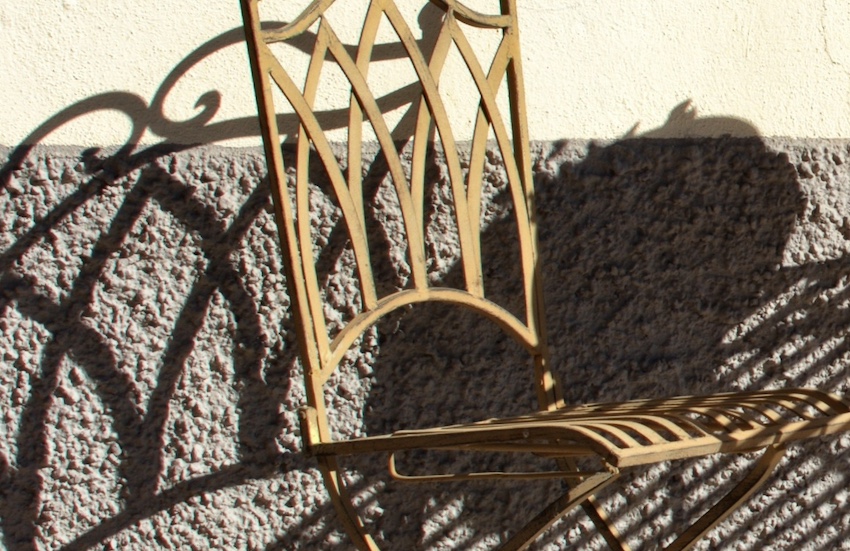
Wrought iron furniture is sturdy and able to withstand harsh weather conditions. It will require occasional re-painting to prevent rust, but overall it is quite resilient if the right finish is applied.
Pros of Wrought Iron Garden Furniture
-
Durability
Wrought iron is incredibly durable and sturdy, making it ideal and a popular choice for outdoor furniture. It can withstand the harsh weather conditions we see in the UK, including rain, wind, and sunlight, without warping or deteriorating. -
Longevity
Due to its robust construction, wrought iron furniture has a long lifespan and it can last for many years with proper care. -
Classic Style
Wrought iron furniture has a timeless and elegant appearance that adds a touch of sophistication to any garden or patio. The intricate designs and decorative elements will enhance the styling of outdoor spaces. -
Stability
Wrought iron furniture is heavy and stable, making it less susceptible to tipping over or being blown away by strong winds. This stability provides peace of mind, especially in windy or stormy weather conditions.
Cons of Wrought Iron Garden Furniture
-
Rust
Despite its durability, wrought iron is susceptible to rust and corrosion, especially if it's not properly maintained. Exposure to moisture and humidity can accelerate the rusting process, leading to unsightly stains and a weakening of the metal over time. -
Heavy Weight
While the weight of wrought iron furniture contributes to its stability, it can also be a drawback when it comes to moving or rearranging the furniture on your patio. Transporting wrought iron pieces will often need assistance due to their heaviness. -
Heat Retention
In the summer, heat retention can be an issue with wrought iron as it has high thermal conductivity, meaning it can become quite hot and uncomfortable to sit on. -
High Maintenance
Wrought iron is high maintenance to keep it looking its best. It is easy to chip or scratch if it's accidentally bumped or mishandled. That said, if you don’t mind the effort, it is easy to repair. -
Cost
Wrought iron garden furniture also tends to be very expensive, and prices are often as high as teak as it is often handmade. The higher cost is attributed to its durability, craftsmanship, and classic aesthetic appeal.
Overall, while wrought iron garden furniture offers many benefits, including durability, longevity, and aesthetic appeal, it's essential to consider the level of maintenance and its susceptibility to rust when choosing outdoor furniture for your space.
6. Stainless Steel Garden Furniture
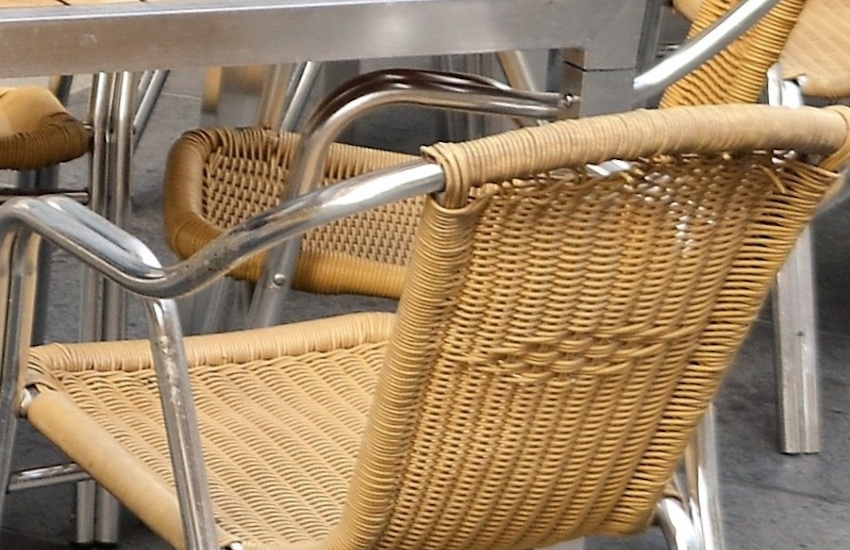
Stainless steel is also highly resistant to rust and corrosion, making it another suitable metal for use in the UK. It's durable, requires minimal maintenance, and is best suited to modern pieces.
Pros of Stainless Steel Garden Furniture
-
Durability
Stainless steel is another highly durable metal that’s resistant to rust and corrosion. It can withstand the elements without deteriorating, making it an ideal choice for UK gardens. -
Modern Style
It has a sleek, modern appearance that complements contemporary outdoor spaces. Its clean lines and highly polished finish will bring a touch of sophistication to your patio. -
Stability
Stainless steel is known for its strength and stability, providing sturdy support for seating and dining.
Cons of Stainless Steel Garden Furniture
-
Cost
Again, like most on our list, it tends to be more expensive than some other materials but the higher upfront cost is attributed to its durability and corrosion resistance. -
Heat Retention
Stainless steel furniture will become hot when exposed to direct sunlight for extended periods. Using cushions or providing shade can help mitigate this. -
Fingerprints & Watermarks
Stainless steel is prone to showing fingerprints, smudges, and water spots, especially on matte finishes. Regular cleaning with a stainless steel cleaner or polish will help to maintain the appearance. -
Weight
Stainless steel furniture is also heavy, which can make it difficult to move or rearrange in your garden or patio. -
Scratching
While stainless steel is resistant to scratching under normal use, it can still be susceptible to damage from abrasive materials or sharp objects. Taking care to avoid scratching or gouging the surface can help preserve its appearance as it is often difficult to repair.
Overall, stainless steel garden furniture offers many benefits, including durability, low maintenance, a modern aesthetic, and versatility. However, it's essential to consider its higher cost and the potential drawbacks, such as heat retention and susceptibility to fingerprints, when choosing it for your patio.
7. Composite Garden Furniture
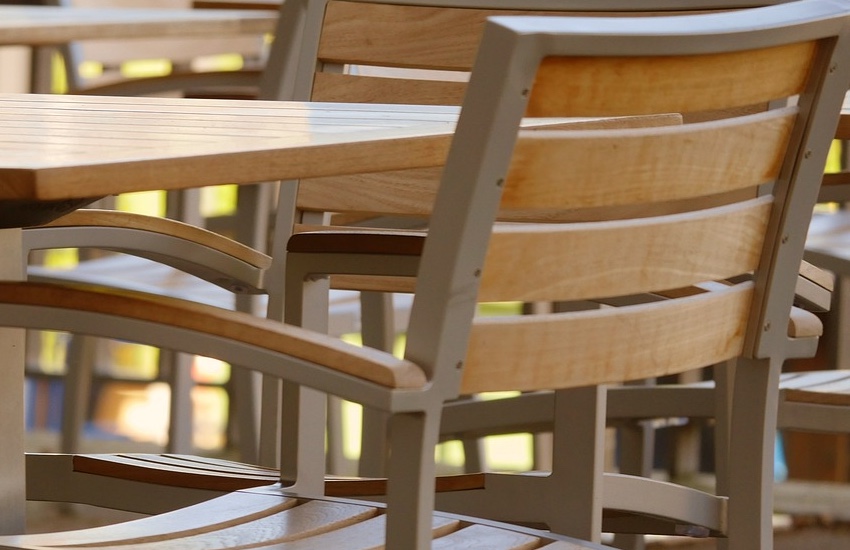
Composite materials, such as recycled plastic or wood fibres mixed with resin, are a new kid on the block that are durable and weather-resistant. They mimic the look of wood but require much less maintenance and are better suited to outdoor conditions here in the UK.
Pros of Composite Garden Furniture
-
Durability
Composite garden furniture is highly durable and resistant to rot, decay, insects, and weather damage. It can withstand exposure to sun, rain, and temperature fluctuations without deteriorating, so it is suitable for year-round use in the UK. -
Low Maintenance
It requires minimal maintenance to keep it looking its best and can be cleaned with warm soapy water. It doesn't need to be sealed, stained, or painted to maintain its appearance. Unlike real wood, composite furniture won't splinter, warp, or crack over time. -
Sustainability
Composite garden furniture is often made from recycled materials, such as plastic bags and wood scraps, making it an eco-friendly choice. -
Longevity
Composite garden furniture has a long lifespan and can last for many years with a little TLC. It is less likely to fade, warp, or deteriorate compared to real wood, making it a durable and cost-effective investment for outdoor living.
Cons of Composite Garden Furniture
-
Cost
Again, it does tend to be more expensive than other types of outdoor furniture, such as some of the cheaper timbers, plastics, or poly-rattans. However, the higher cost is attributed to its durability, longevity, and eco-friendliness. -
Heat Retention
Composite furniture can also become hot when exposed to direct sunlight for extended periods but using cushions or providing shade will of course mitigate this issue. -
Style
Some people find the appearance of composite garden furniture less appealing compared to the real thing, and whilst it is available in a variety of styles, it may not offer the same warmth or authenticity as natural materials and can look a little fake. -
Weight
It can also be heavy, which may make it difficult to move or rearrange in your garden or patio. This may be a consideration if you plan to frequently change the layout of your outdoor space. -
Scratching
While composite furniture is generally durable, it can still be susceptible to scratching or gouging if it's not properly cared for, which like stainless steel, is tricky to repair.
Overall, composite garden furniture offers many benefits, including durability, low maintenance, environmental sustainability, and a wide variety of styles. However, it's essential to consider its potential drawbacks, such as cost, and difficulty to repair any scratches when choosing it for use in the UK.
![]()
Our Final Thoughts...
Even if the furniture you purchase is made from any of the materials above and can withstand the weather here in the UK, it is best to bring any cushions and parasols inside when you’re not using them.
We would also recommend covering your furniture during the off-season or when not using it in the summertime. This will help to keep it cleaner for longer and ready to use when the sun shines.
However, make sure to use a breathable cover that can be secured to the furniture to prevent moisture buildup and prevent it from easily blowing off.
To keep your furniture looking its best, clean it regularly with warm soapy water, rinse and dry. With our range, you may also want to apply a little car wax once or twice a year.
If you have any photos of your Lazy Susan Garden Furniture, we’d love to see a few for our Do Some Good charity campaign. You can tag us @LazySusanFurniture on Instagram or Facebook or Upload Here.




